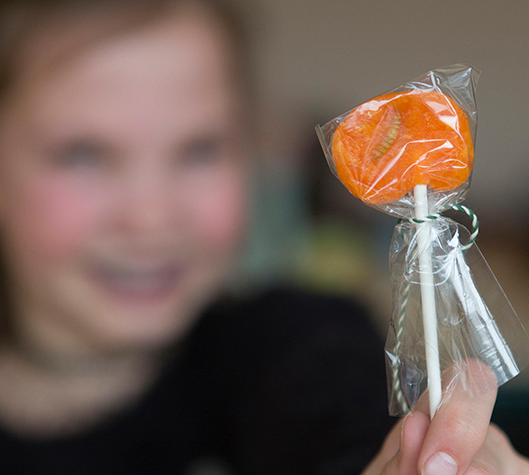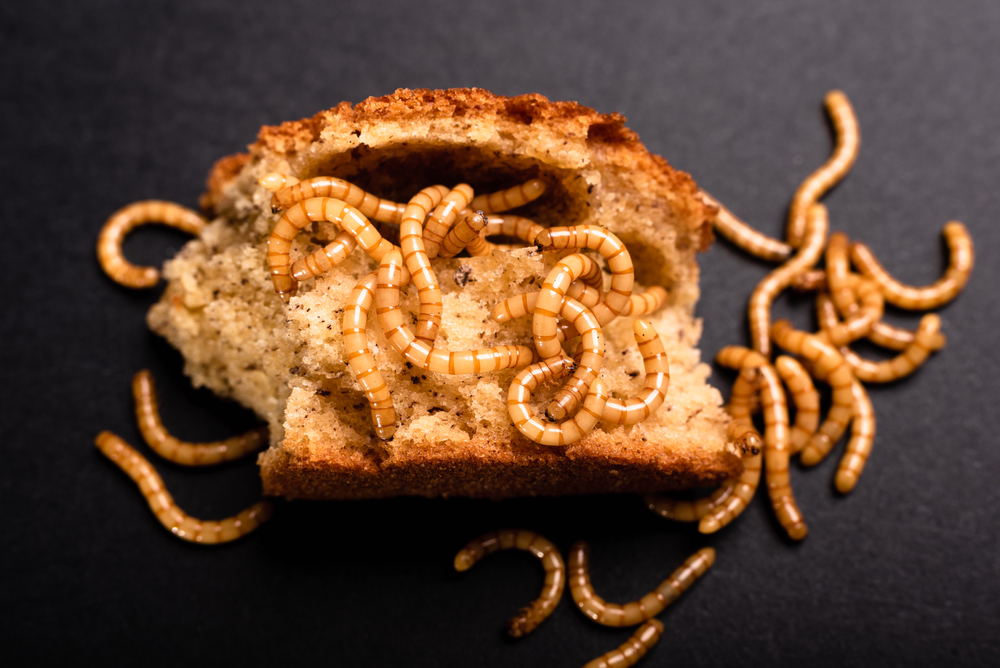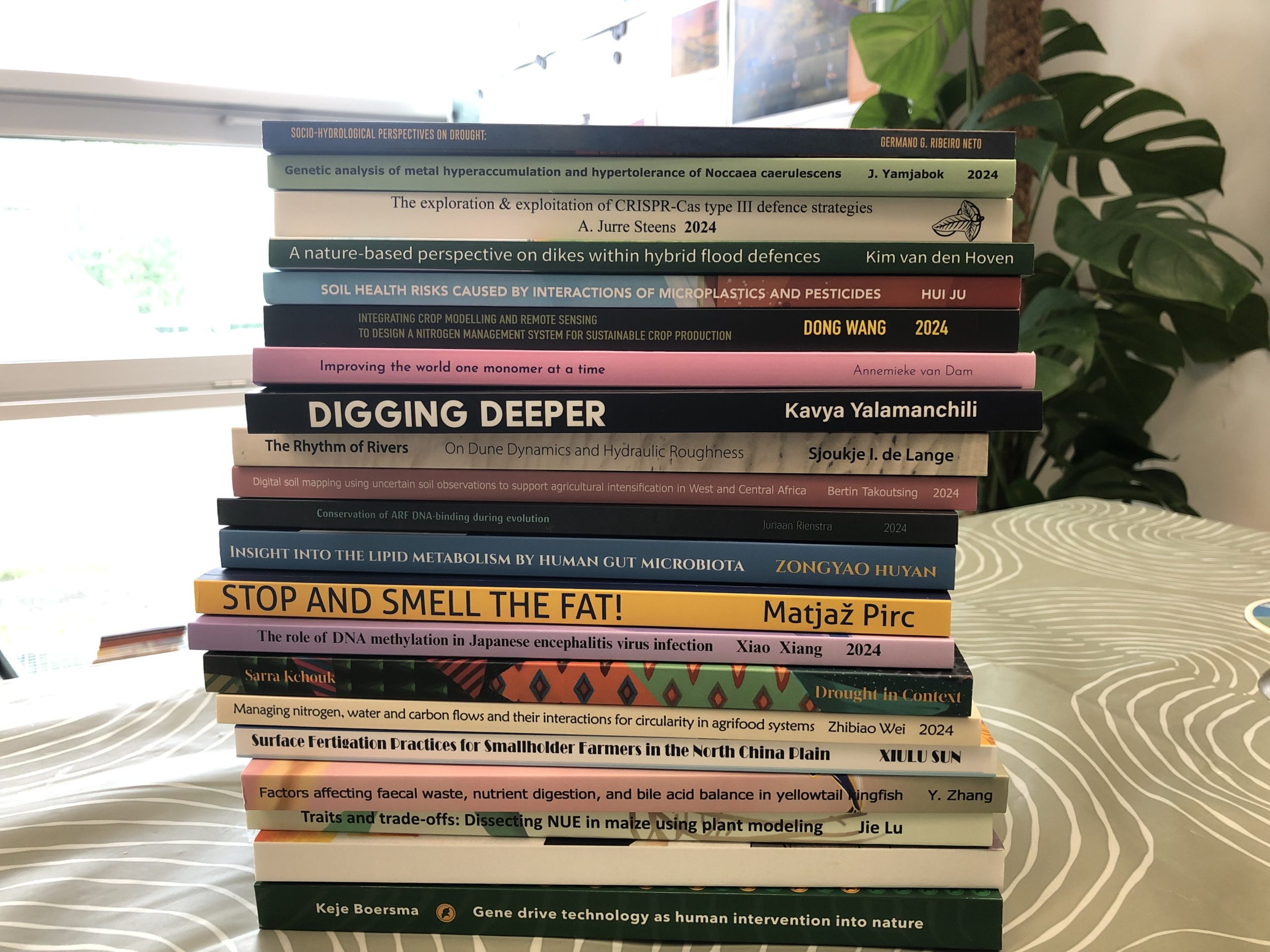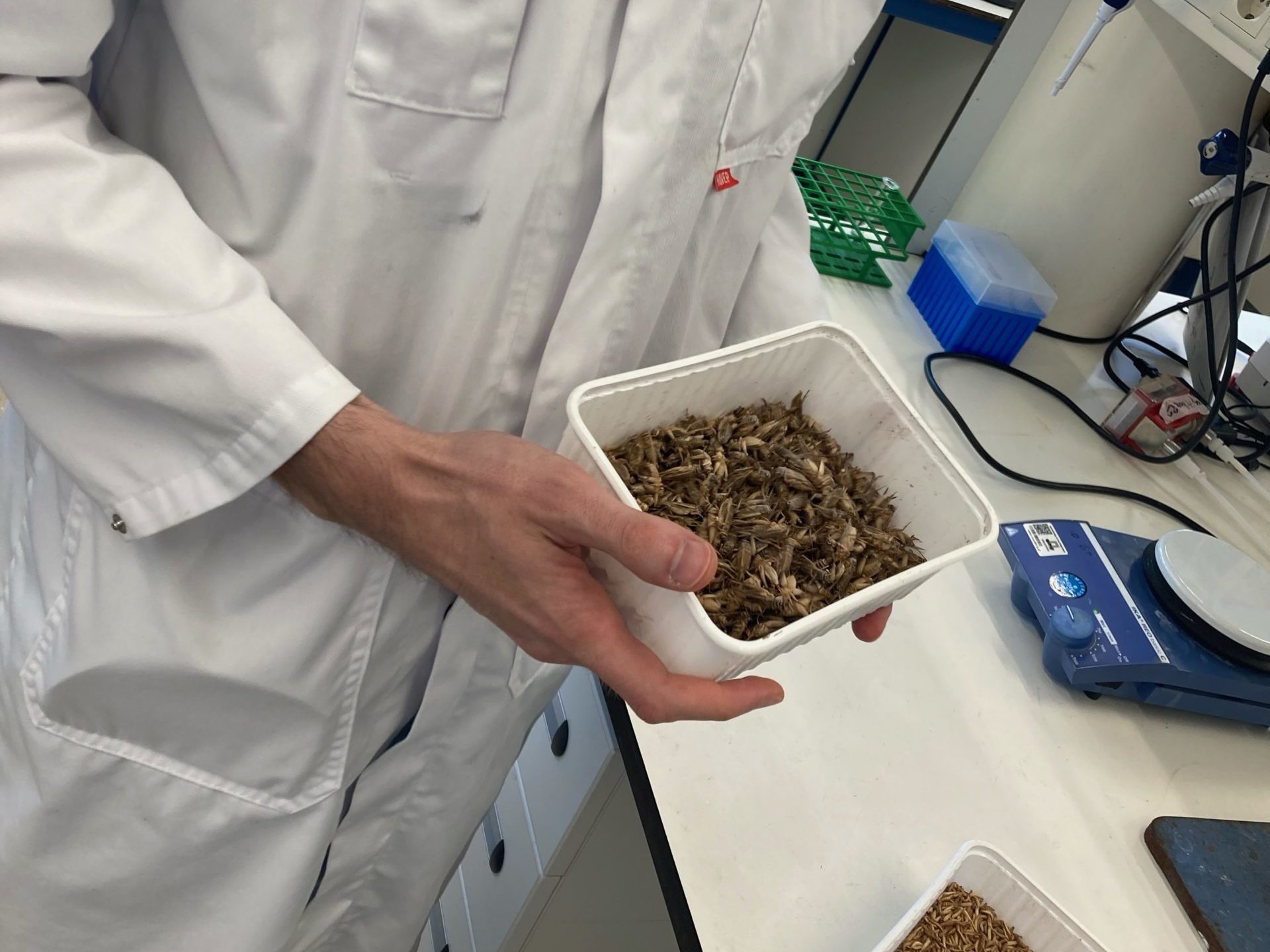Sustainable, cheap, safe inputs are needed before the cultivation of insects can become a profitable sector. ‘The main issue is that the law should allow more waste streams to be used as insect feed.’
It was well over 10 years ago that Teun Veldkamp started researching the use of insects as livestock feed for pigs and poultry. A researcher at Wageningen Livestock Research, he now heads the SUSINCHAIN (Sustainable Insect Chain) project that ends this year. The project aimed at removing the last remaining barriers to a profitable insect-breeding industry. Has it succeeded? Together with Veldkamp we look at four indicators: the client, the production process, the cost price and the expertise.
Hidden ingredient
Westerners still have a great aversion to eating insects. A six-legged creepy-crawly staring up at you from your plate is more likely to disgust you than to whet your appetite. So the researchers concentrated on adding insects in unrecognizable forms to foods that consumers are familiar with. ‘We’ve got six new products in which insects are substituted for another source of protein,’ says Veldkamp. ‘That is what is new about this project: we have processed insects as an ingredient in everyday meals, in bread and pasta for instance.’ The products include ‘mince’ from mealworms for Bolognaise sauce, a flatbread made from crickets, mealworm falafel and sausage, and a spicy cricket pesto.
Consumer research has shown that the food developed this way went down well with the tasting panels. Veldkamp thinks that insects have a future in Europe in the form of these kinds of everyday products. ‘I expect that our project partners, like New Generation Nutrition and Bugging Denmark, will continue to develop these products and launch them on the market.’
A guide for upscaling
The prognosis is that the sector will be 1000 times bigger in 2025 than it was in 2019, in terms of both production volume and jobs. In the Netherlands and Europe generally, insect breeders are planning to expand. ‘Protix (a firm breeding fly larvae for livestock feed, ed.) wants to expand in this country as well as to other countries. And we also have two large mealworm-breeding companies in the Netherlands: Ÿnsect and Wadudu.’
Veldkamp’s research team investigated the bottlenecks for upscaling, and how to address them. They drew up a roadmap for upscaling and wrote policy recommendations. ‘The main issue is that the law should allow more waste streams to be used as insect feed,’ says Veldkamp by way of a summary. He’s referring to substrates from the waste from catering outlets and supermarkets, and byproducts from abattoirs and manure. ‘A lot of the substrates that companies currently use are waste streams that pigs and poultry can eat themselves. So if you use the insect itself as animal feed, you’re not gaining anything in sustainability terms. We need to look for new substrates. A new project called Safe Insects is studying the safety risks.’ Only when it has been ascertained that these waste streams are safe, and under what conditions that is so, can legislation be relaxed.
Still too pricy
The cost price of a kilo of insects is still too high for fish, poultry and pig farmers to be able to switch from soya or fishmeal as a source of protein, says Veldkamp. ‘We know that you can easily mix five to ten per cent of insect protein into livestock feeds, but it isn’t happening yet.’ Mixed feed companies put together a feed based on the nutritional needs of a particular animal and the lowest price for ingredients. They do not take into account the extra health benefits of insects as feed ingredients, such as better gut health, greater immunity or higher production. In an effort to change that, Veldkamp and his colleagues are providing data that show the benefits. ‘In pigs, poultry and three species of fish – salmon, rainbow trout and seabass – growth or egg production is as at least as good on a diet of insect protein as on soya protein. We’re still waiting for the health results to come in.’
The insect breeders can keep production costs down by sourcing ingredients locally, or by using waste streams that are not suitable for direct consumption by livestock or fish. A company can also specialize in a single stage of the insect-breeding process. ‘It is expensive to have all the expertise in-house. A company like Protix breeds and raises the insects and breeds larvae on waste streams on a large scale under one roof. I foresee that companies will focus more on a single part of the process, as you see in other animal sectors.’
Openness
The insect sector is dominated by large technological companies, and they are not keen to share information about their production process, nutrition facts or problems encountered in breeding. So it is not yet a realistic option for poultry or pig farmers to switch to insect breeding. That slows the development of the sector. By contrast, says Veldkamp, ‘Poultry and pig farmers get together in study groups to learn from each other. So we researchers can help them solve problems.’ But there isn’t yet that kind of openness in the insect-breeding sector. The project is making a start by sharing ‘best practice sheets’ on its website (www.usinchain.eu), with tips based on interviews about the positive and negative experiences of insect breeders. ‘You often learn more from the bad experiences than from the good examples.’ Help with calculations is also available so that entrepreneurs can see how their decisions affect the sustainability of the production process.
Veldkamp would like to see insect breeding grow into a mature livestock sector. ‘Within Wageningen Livestock Research we are working on expanding the field so good use is made of the available expertise on all its facets: breeding, animal nutrition, health and wellbeing, processing and the economics of it. We can’t draw up the legislation, but we can help by providing knowledge and data. We must focus on the things we have control over.’
Insects and the Law
There have been a couple of major breakthroughs in the European legislation on using insects as food. Since 2021, six products have been approved as Novel Foods (new foods that Europeans hardly ever ate before 1997) made from crickets, mealworms or locusts. And since the same year, farmers have been allowed to feed fish, poultry and pigs on processed insect protein.

 There is still a widespread aversion to eating insects in the West. A six-legged creepy-crawly staring up at you from your plate is more likely to disgust you than to whet your appetite. Photo Alamy
There is still a widespread aversion to eating insects in the West. A six-legged creepy-crawly staring up at you from your plate is more likely to disgust you than to whet your appetite. Photo Alamy 

